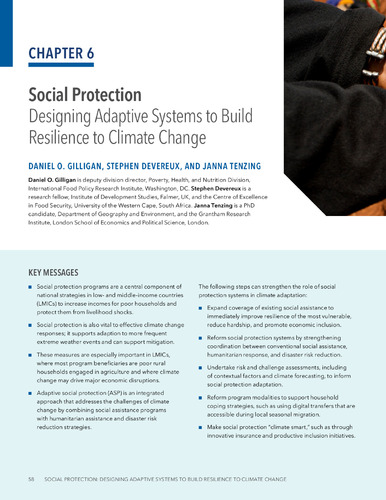Social protection: Designing adaptive systems to build resilience to climate change
Abstract
Social protection programs are a central component of national strategies in low- and middle-income countries (LMICs) to increase incomes for poor households and protect them from shocks to their livelihoods. Social protection programs currently reach more than 2 billion people worldwide and are found in every country in sub-Saharan Africa. Social protection systems comprise a wide variety of programs that include targeted cash and food transfers, food vouchers, school meals, public works, old age pensions, and public sector insurance, as well as the policy, administrative, and funding mechanisms to deliver these programs. Numerous studies that draw extensively on rigorous impact evaluations have documented substantial short-term impacts of social protection programs, especially cash and in-kind social assistance, on food security and asset formation, as well as on education, health, and dietary diversity. However, evidence on the impact of social protection systems designed to sustainably reduce poverty by responding to large-scale shocks is more limited. For example, many national social protection systems in the poorest and most vulnerable countries of sub-Saharan Africa and South Asia dating to the 2000s started with targeted standing safety net programs and then later integrated measures to provide humanitarian assistance, scale up temporary transfers to better respond to shocks, and promote household and community resilience — the ability to avoid or escape from chronic poverty in the face of myriad stressors and shocks. The potential for social protection to help address the challenges of climate change has been recognized for more than a decade, but the expansion of social protection programs designed to address climate change is relatively recent.

